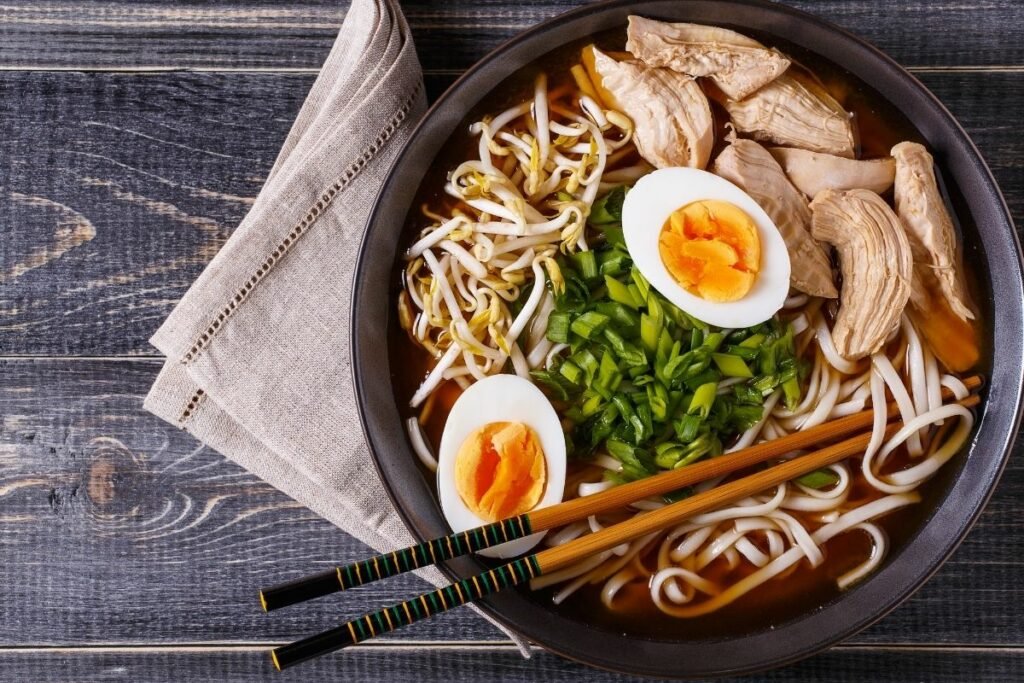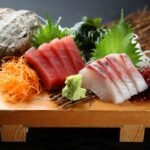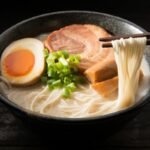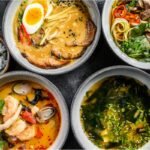If you’re one of the rare individuals who hasn’t tried this fantastic meal, you might be wondering what the cheap packs of dry noodles you ate in college have to do with high-end restaurant menus.
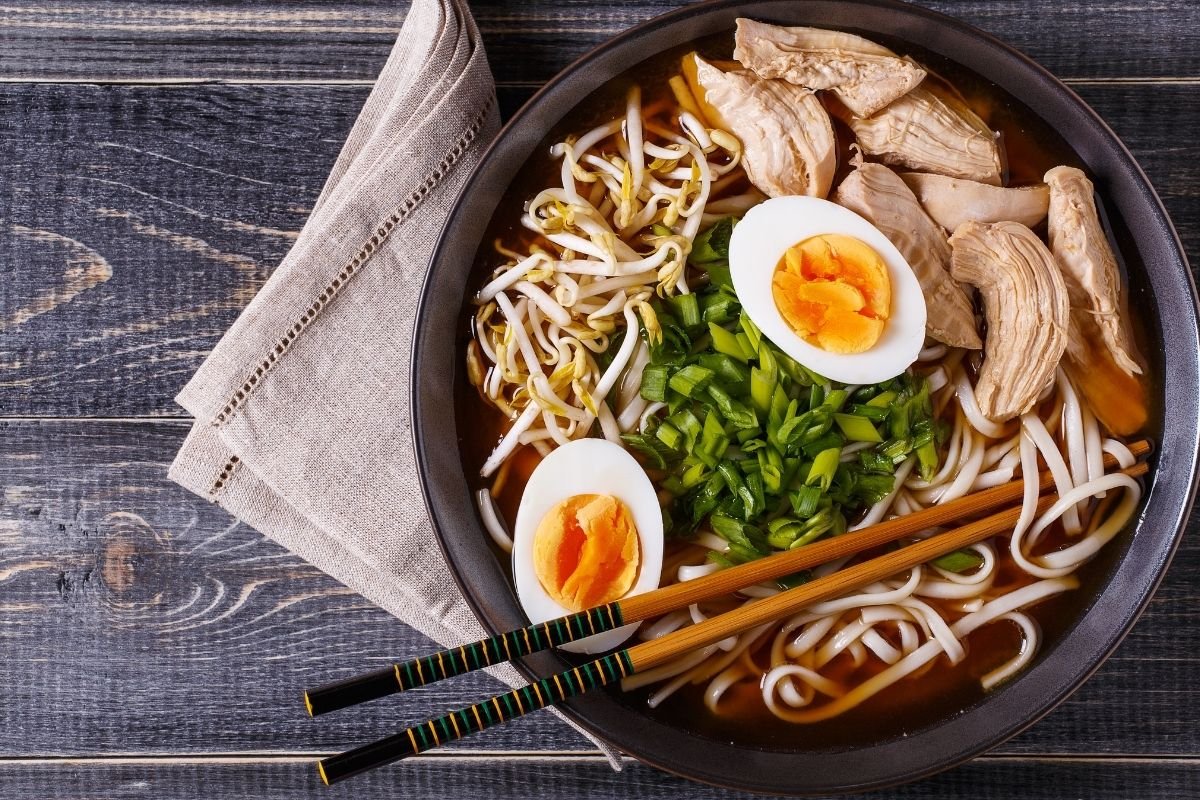
However, those microwaveable noodles bear little similarity to the ones served in noodle restaurants throughout the world. In reality, today’s classic ramen has a history that spans more than a century.
What Is Ramen?
Ramen is usually regarded as a Japanese innovation, however, whether the noodles were invented in Japan or China is debatable.
It’s easy to understand how the dish’s roots may have become murky: ramen-noodle businesses initially became popular in both nations at the beginning of the 1900s, when the noodles were referred to as “Chinese soba” noodles in Japan (see also ‘Are Soba Noodles Vegan?‘).
The wheat-based noodles were likely introduced to the Japanese by Chinese laborers serving food from food carts, but the popularity of ramen exploded after the Second Sino-Japanese War when Japanese soldiers came home from China with a new appreciation for Chinese food.
This resulted in a rapid influx of new Chinese eateries around the country.
So, while it’s difficult to state with certainty, it’s easy to argue that ramen originated in China and was popularized in Japan.
And there’s no denying that, since being exposed to the dish, Japanese eateries have truly made it their own.
Different Types Of Ramen
Some ramen restaurants sell thick, chewy noodles, while others serve thinner, less-glutenous varieties. Noodles are often long and straight or wavy in form.
Some establishments manufacture their noodles fresh in front of customers, while others purchase them from a third party.
But as well as noodles, the broth that the ramen is served in can vary too, here are some popular varieties.
Shio
Shio ramen is usually cooked with chicken broth, although it may also be made with pork or seafood (see also ‘What is Kamaboko?‘) . This lightweight, milder ramen, which is also lower in fat and oil, has a transparent look and is the saltiest of the
Shoyu
Shoyu is the Japanese name for soy sauce, and this lightweight ramen, which might be clear-brown or darker and cloudier, is seasoned with it.
It is the most prevalent variety of ramen and was established in 1910 at Rairaiken.
While soy sauce may appear to be a common component, chefs who serve shoyu ramen do not use the type of soy sauce one could find at home.
Instead, they produce their base sauce with a proprietary combination of dried mushrooms (see also ‘Can You Eat Raw Shiitake Mushrooms?‘), dried fish, and herbs. The tare is frequently used with a chicken broth base.
Miso
Miso ramen, as the name implies, is flavored with miso, a fermented soybean paste formed from soybeans, miso, or rice, and tinted red or white.
This results in a thick, rich, and more complicated form of ramen that originated in Japan’s Hokkaido area but has since spread throughout the country.
Tonkotsu
Hakata ramen, which originated in Fukuoka, is a popular sub-category of tonkotsu ramen. This extra-rich, milky-white tonkotsu is frequently served with thin, firm noodles and little garnishes.
Because the store that created hakata ramen was merely a stand with no seats, selling rapid-cooking thin noodles made sense for speedy customer service.
Other Kyushu regions feature thicker noodles and a variety of tonkotsu broths.
How Ramen Is Made
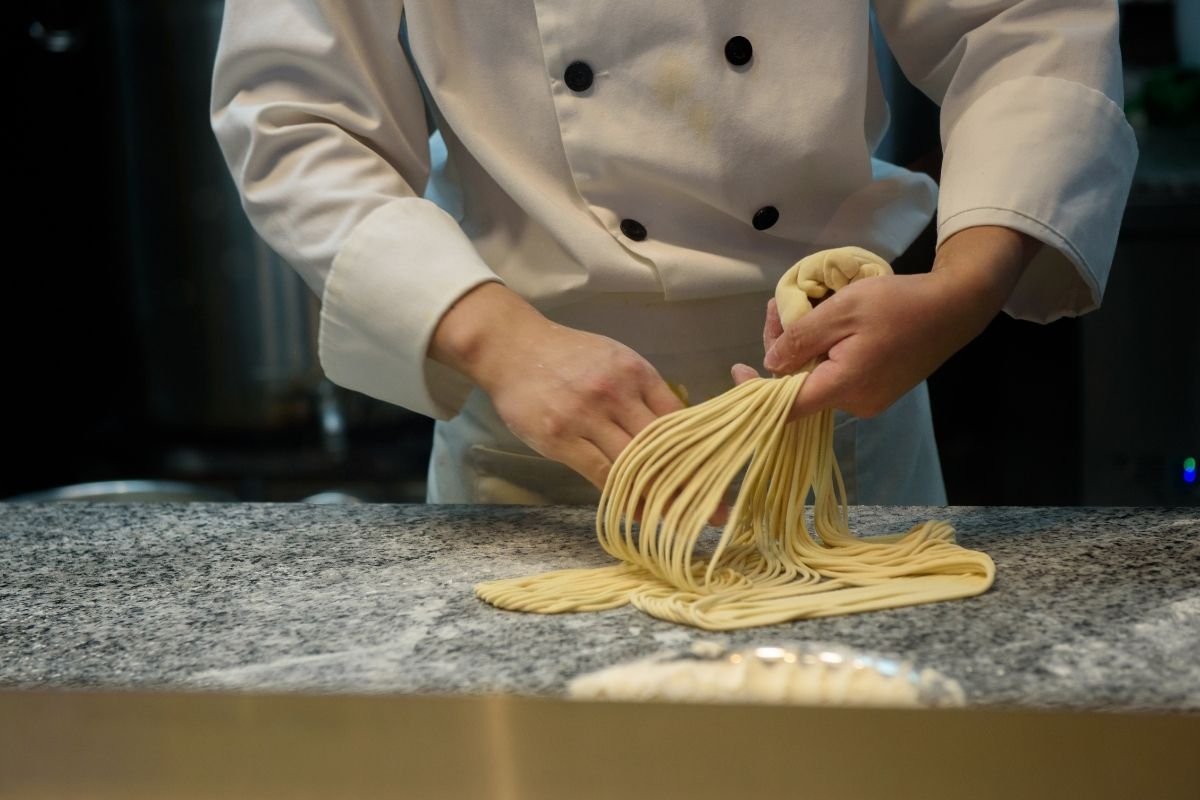
Ramen, like many other varieties of noodles, is produced from wheat flour, water, and salt. This mixture is kneaded into a dough, which is then rolled (or hand-pulled), sliced, and cooked.
However, there is one key element that distinguishes ramen from other types of noodles: kansui, a sort of alkaline water that gives ramen noodles their trademark springy quality.
While it is feasible to simulate the effects of kansui by replacing baking soda, true ramen artists will go out of their way to find a bottle of the actual thing.
Preparing And Serving Ramen
There are several methods for creating ramen at home. You may buy fresh ramen noodles from a Japanese or Asian grocery shop and make your own broth.
You may use one of the many instant ramen varieties available, some of which come with their own container, eliminating the need for a bowl entirely—just add boiling water.
You can even create your own homemade ramen noodles (see also ‘Are Ramen Noodles Fried?‘) if you’re feeling very adventurous.
If you’re using fresh ramen, you’ll usually cook the noodles for one to two minutes before draining and adding them to your boiling broth.
Simply follow the package instructions to make instant ramen, however, it’s easy enough to make a fast homemade shoyu broth for your instant noodles, which is a simple but big boost over the spice packet.
Instant Ramen
Packaged instant ramen is the most prevalent type of ramen, and it is significantly more popular than the traditional form.
This product is generally liked, from the dining room to the dorm room, and while it may not precisely replicate the feeling of having fresh ramen noodles in a slow-simmered bone broth, it is a culinary classic in its own right.
Typically, these noodles are cooked for two to three minutes before adding a flavor package to boiling water to make the broth.
However, inventive cooks have created a limitless variety of unique uses for instant ramen, including ramen stir-fries, ramen sandwiches, ramen waffles, ramen salads, and even ramen desserts (see also ‘Are There Deserts In Japan?‘).
Is Ramen Healthy?
Though eating instant ramen noodles on occasion is not harmful to your health, regular use has been related to poor overall diet quality and a number of negative health impacts.
A study of 6,440 Korean adults revealed that individuals who ate instant noodles on a daily basis had lower intakes of protein, phosphorus, iron, calcium, niacin, potassium, and vitamins A and C than those who did not.
Regular intake of instant noodles has also been linked to an elevated risk of metabolic syndrome, a collection of symptoms that includes excess belly fat, high blood sugar, high blood pressure, and abnormal blood lipid levels.
As a result, it’s best to limit your consumption of instant ramen noodles and avoid using them as a regular meal substitute.
If you’re watching your weight, the water retention caused by ramen’s sodium may not be the only aspect of this meal that can cause bloating.
The number of calories in a bowl of ramen noodles varies according to portion size and product, but a typical serving of dry instant ramen noodles may contain around 200 calories.
Summary
Now that you know what ramen is and all the wonderful ways that it can be served, you are probably jumping at the chance of trying some if you haven’t already.
There are lots of great ramen places in most cities, and you don’t even have to be in Japan to come across them!
Having said this, remember that even though ramen is delicious, you should try not to eat it for every meal because it can be quite high in sodium even if it has been made by professional chefs.
- What Is a Maiko? - July 13, 2025
- What Does Domo Arigato Mean? - July 12, 2025
- What Does Naruto Mean? - July 12, 2025

